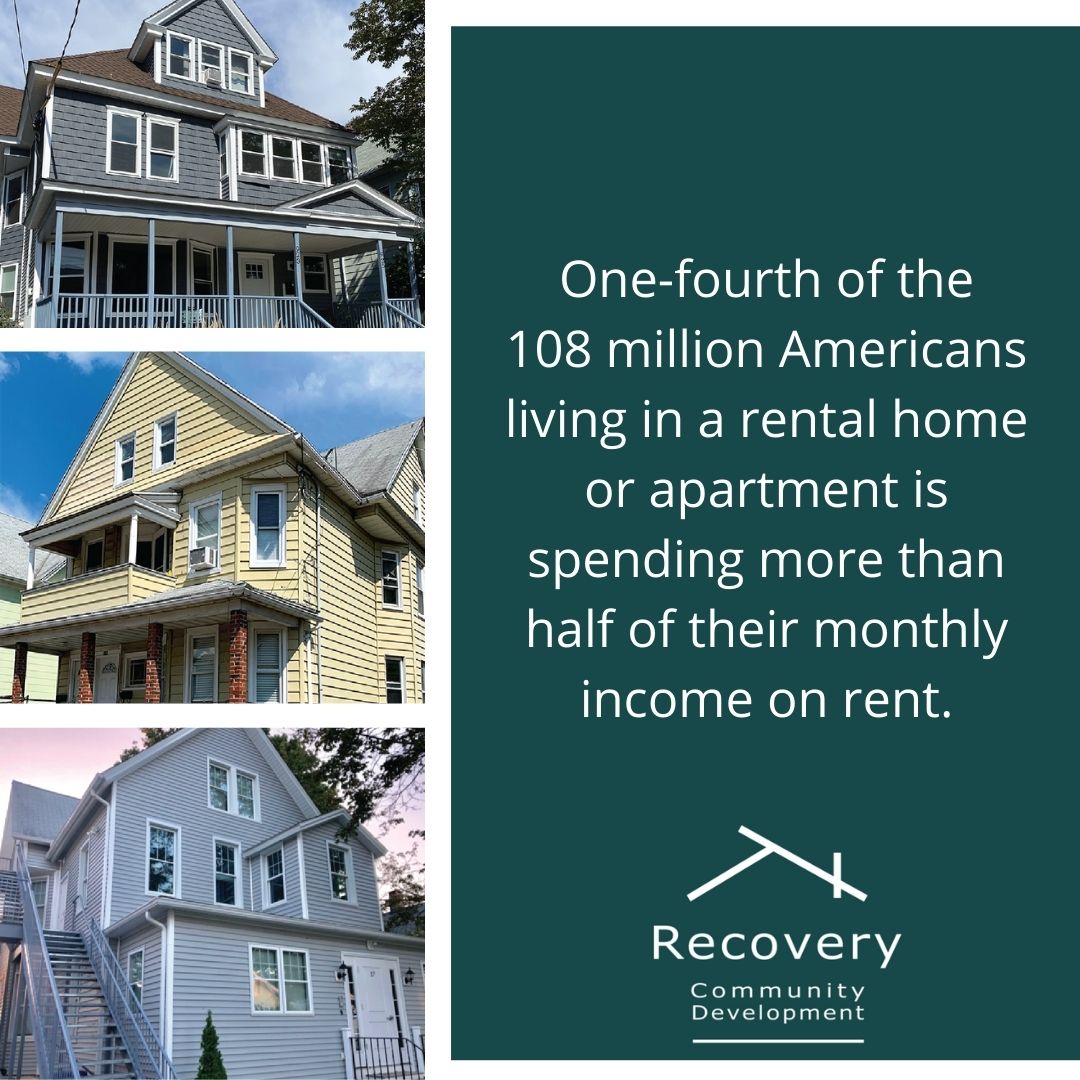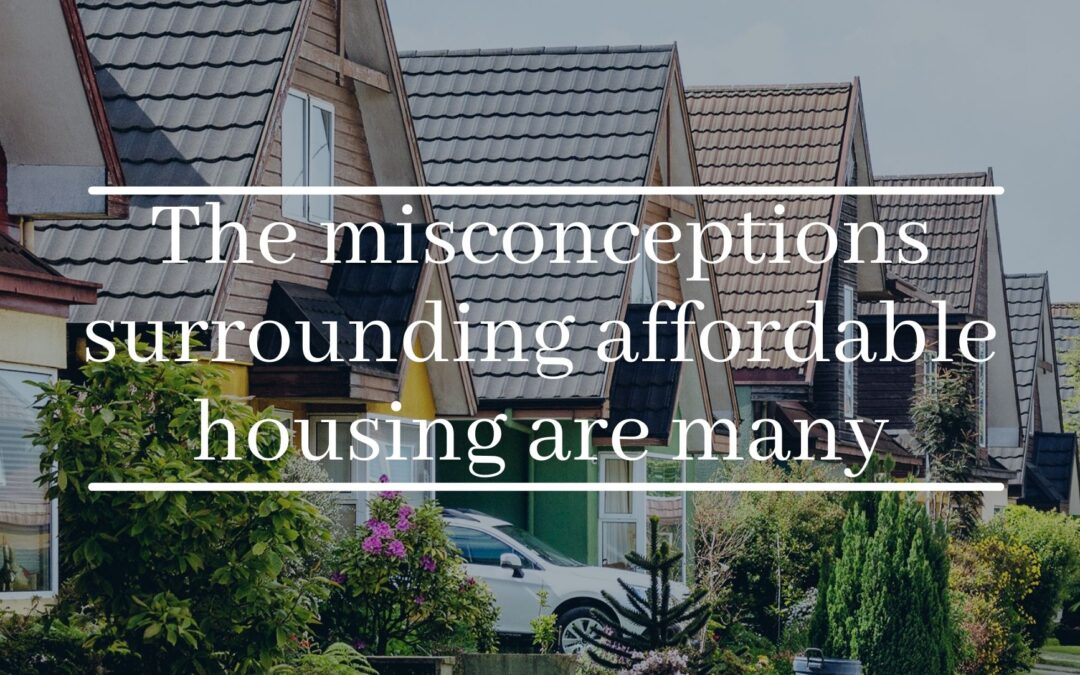Affordable housing is any housing that costs no more than 30% of a household’s gross income. The very idea that housing within these margins is an undesirable thing is quite absurd, yet doubts abound and communities, businesses, and other professionals rally against the implementation of affordable housing rather than supporting its development.
With one-fourth of the 108 million Americans living in a rental home or apartment spending more than half of their monthly income on rent, the number of housing-insecure individuals in the US is staggering. The possibility of eviction due to the unsustainable housing situation that a lack of affordable housing creates is very high, and this harms the social and economic wellbeing of the entire community. Just under four million evictions are filed every year, and around 200,000 people sleep in their cars, on the streets, or shelter under bridges.
“The United States is on the brink of an eviction crisis of unprecedented magnitude,” Emily A. Benfer, a professor at Wake Forest University School of Law.

The misconceptions surrounding affordable housing are many. Chief among them being that it will bring in less desirable residents, it is
constructed poorly and will result in depressing the neighborhoods they are built in, and that it cannot possibly be good for business. All of this is false.
Job Creation
Areas with unattainable and unsustainable housing prices slow down local business and create job vacancies in its wake. Conversely, the impact of building a new affordable housing building has impressive and far-reaching positive effects. Building 100 affordable rental homes generates 161 local jobs in the first year alone. These new jobs include manufacturing and construction companies, tradespeople, property managers, leasing agents, security staff, and others to sustain and maintain these new residencies. Keeping properties clean and well maintained means standing jobs after all the building is done, and these positions in turn attract and retain new residents to fill affordable vacancies. The healthier an economy is, the more jobs it requires.
Health Benefits
An individual’s housing is an enormous social determinant of their health. Though income and education are also factors to consider, housing is a huge component that influences a person’s physical and mental well-being. The devastating truth about poverty is how severely it limits one’s options. Poverty is linked to an impressive range of acute and chronic conditions. Simply put, when someone’s home is unaffordable, they are far less able to acquire healthy foods and see a doctor. Affordable housing means that low-income families and individuals are less likely to face environmental threats, and can actually afford healthy foods and routine medical care.
Economic Benefits
Rent is the single largest expense for most Americans, and due to the disparity between income and rental costs, it is usually accompanied by a great deal of stress and worry. High housing prices creates less spending power and leads to a slowing of the local economy. Affordable housing helps ease the stress and creates better scenarios for economic success. When one knows that they can afford their rent, it creates the opportunity to spend more on other essentials, and allows for an increase in discretionary spending. Local businesses directly benefit from its community members being able to partake in more than the bare essentials. When affordable housing is readily available, more opportunities are created for people at all income levels. The more people can spend on adequate healthcare and fresh food, the better for everyone.
Another essential element that improves local economies in terms of affordable housing is in its stability. Affordable options stay rented and payments are more reliably supplied. Luxury properties have heavily fluctuating occupancy rates, often leaving a lot of expensive empty spaces. In essence, improving the lives of others helps everyone in a community. Building 100 affordable rental homes generates $11.7 million in local income, $2.2 million in taxes and other revenue for local governments. In the first year.
The long-term benefits of affordable housing are many. Research shows that every extra year that a child spends in a better neighborhood environment improves the child’s economic output, as an adult. This includes income, likelihood of college attendance, and their probability of avoiding teenage pregnancy. Affordable housing creates the possibility to decrease childhood poverty. Providing children with a more equitable path forward is one of the means of building economic growth and healthier societies. Providing better neighborhood environments for children creates opportunities for people to give back to their communities.
Affordable housing is not the creator of economic depression and undesirable outcomes, it is a boon. It is a way forward. The biggest difference between homeless families and other poor families concerns the resources they need to secure stable housing. A body of research has shown that rental assistance can decrease the likelihood that a low income family experiences homelessness. Access to decent and affordable housing provides stability for vulnerable households and prevents homelessness. Bringing meaningful and necessary change within our society is a noble goal to strive for, and affordable housing is a highly impactful means of doing so.
Resources
https://commonbond.org/economic-benefits-of-affordable-housing/
https://www.jchs.harvard.edu/sites/default/files/Harvard_JCHS_Americas_Rental_Housing_2020.pdf
https://www.whitehouse.gov/wp-content/uploads/2019/09/The-State-of-Homelessness-in-America.pdf
https://law.wfu.edu/faculty/profile/benfere/
https://nlihc.org/sites/default/files/A-Place-To-Call-Home.pdf
https://www.cdc.gov/socialdeterminants/index.htm
https://scholar.harvard.edu/files/hendren/files/movers_paper2_vinterim.pdf
https://b.3cdn.net/naeh/b39ff307355d6ade38_yfm6b9kot.pdf
https://www.nytimes.com/2020/08/07/business/economy/housing-economy-eviction-renters.html
